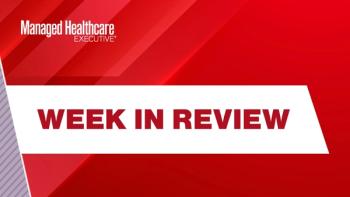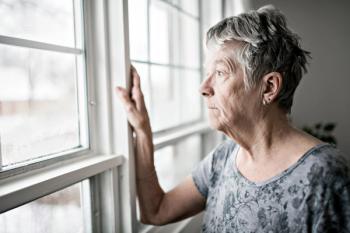
- MHE September 2020
- Volume 30
- Issue 9
10 ways healthcare tech is helping combat COVID-19
A look at how technology is making a difference in the delivery of care during the pandemic.
COVID-19 has seemingly reached into every corner of American healthcare, with new procedures, regulations and safety precautions required to keep patients and caregivers safe and protected from the virus.
Wearing masks and social distancing are crucial, but these low-tech strategies are hardly new; versions were used during the 1918 flu pandemic.
Videoconferencing has become part of everyday life, and telehealth, which was stuck in the doldrums for years, has taken flight.
Biotechnology firms are turning to old and new technologies to conduct research, ramp up testing, and develop and test vaccine candidates. Behind the scenes, recruitment platforms have been deployed to fill positions with trained healthcare professional, and robots are assisting in medical development and deliveries to cut down on human contact.
Here is a list of 10 technologies that have been part of the response to the COVID-19 pandemic:
Contact tracing platform
Healthcare tech has supported communitywide contact tracing and digital COVID-19 risk assessments. Adam Sabloff, founder and CEO of VirtualHealth, a New York City healthcare software and care management company, led a team that developed a screener survey to help identify patients who may have contracted COVID-19 or are at risk of infection.
Related:
“The pandemic has increased the need for our healthcare system to adopt a more proactive care model, an approach that is all about anticipating patients’ needs before an emergency (and costly) healthcare event,” Sabloff says.
Payer, provider communication
Russ Thomas, CEO of Availity, a healthcare information network company headquartered in Jacksonville, Florida, says technology has been indispensable during the pandemic, accelerating automation of clunky, manual processes.
Providers and payers have long used electronic transactions to process claims and other data, but several processes still rely heavily on phone calls, paper or fax machines, according to Thomas. “When COVID-19 forced staff to work remotely, both providers and payers had to quickly adopt other means of communication. Fortunately, technology already existed for sending secure electronic attachments and automating prior authorization.”
A silver lining of the pandemic is that it forced the sector to accelerate use of these tools, according to Thomas. Technology enabled the consolidation of policies and procedures into a central location for ease of use by providers, he says. Moreover, with so many people working remotely, these same technologies helped providers send relevant documentation and information to payers electronically.
AI for data mining
Robert L. Quigley, M.D., senior vice president and regional medical director of International SOS, a risk mitigation firm, notes that one of the strongest technological tools in the fight against COVID-19 is artificial intelligence (AI) and the capability to analyze enormous amounts of data. “AI can be used to evaluate a large number of patients’ medical records at once to identify which (patients) are (at) highest risk and should receive treatment first,” he says.
Remote surveillance of patients on ventilators
Some hospitals are using remote surveillance to effectively monitor COVID-19 patients on ventilators and protect care teams. Chris Gutmann, executive director of information technology (IT) for Yale New Haven Health, describes how this large healthcare system in Connecticut remotely monitors patients on ventilators at its five hospitals.
“The VPS (ventilated patient surveillance) workstation helps staff remotely see and hear the ventilators in the nontraditional ICU settings of the pandemic,” he says. The workstation analyzes livestreaming data from ventilators and makes it available to the health system’s tele-ICU group. “It escalates emergent clinically actionable events to respiratory therapists, pulmonologists and intensivists,” Gutmann says. Remote surveillance helps protect front-line workers from unnecessary exposure to infection and reduces the use of personal protective equipment (PPE).
Access to clinical histories at the point of care
Matthew Michela, president and CEO of Life Image, a healthcare interoperability company in suburban Boston that specializes in the sharing of images, says many healthcare institutions are using technology to reduce dependence on physically managing records, help control infection spread and increase access to important clinical data.
He cites a recent study that revealed that just 6% of patients had their health history available when they went to the hospital for COVID-19 treatment.
“Healthcare data is notoriously siloed,” Michela says, voicing a common sentiment. But delivering acute care during a pandemic puts a premium on access to a patient’s clinical history at the point of care, he notes, and the healthcare system responded to the need. “The gap in access to important clinical information was quickly recognized, and many in the industry deployed existing technology solutions to effectively exchange data with community providers or patients to better coordinate care,” he says.
Rapid testing
New technology for rapid testing at the point of care will reduce backlogs and allow hospitals and practices to replace temperature scans with actual virus tests, says Ron Chiarello, CEO, founder and member of Alveo Technologies, a biotech company in Alameda, California, that is developing at-home tests of infectious disease, including COVID-19.
“This new technology will allow healthcare organizations to see patients basically as normal again for all the delayed, nonemergent care; get newly identified COVID cases into care faster; and save the extra PPE for treating the cases that really need it,” he says. New testing technology will also help with accurate data collection about the number of cases, says Chiarello.Researchers at Yale have reported success with a saliva-based test that they argue would eliminate the costs and the logistical bottlenecks of tests that depend on nasopharyngeal swabs. The NIH announced in late July that it was investing almost $250 million in new COVID-19 testing technologies. Using a “Shark Tank”-like approach, NIH has awarded contacts to three companies developing point-of-care tests: Mesa Biotech and Quidel, both in San Diego, and Talis Biomedical in Menlo Park, California. NIH is also investing in four companies developing lab-based tests: Ginkgo Bioworks in Boston; Helix OpCo in San Mateo, California; and Fluidigm and Mammoth Biosciences, both in South San Francisco, California. Researchers at Yale have reported success with a saliva-based test that they argue would eliminate the costs and the logistical bottlenecks of tests that depend on nasopharyngeal swabs.
UVC light for SARS-CoV-2 inactivation
Some hospitals were using ultraviolet C (UVC) light to sterilize rooms before the COVID-19 pandemic. At Anne Arundel Medical Center in Annapolis, Maryland, a robotlike device dubbed CRIS (clean rooms improved safety) emits UVC to disinfect rooms in the emergency department and intensive care unit. UVC’s antiviral and antibacterial properties are well documented, and recently published research suggests that UVC will inactivate SARS-CoV-2. The FDA has, though, expressed some reservations: “Currently there is limited published data about wavelength, dose and duration of UVC radiation required to inactivate the SARS-CoV-2 virus,” the agency says on its website. But most agency’s comments are directed at at-home UVC devices.
Remote monitoring of patients
Justin Williams, CEO and founder of Noteworth, a digital healthcare company, says that remote technology allows monitoring of patients who are symptomatic but don’t need hospital care. “This technology not only provides key telemetry about a patient but (also) can do it asymmetrically, freeing up staff resources desperately needed in dealing with very sick patients,” he says.
Remote monitoring, which is part of his company’s platform, can also help gather data over a geographic area, giving a real-time view of disease, says Williams.
Interoperability
Brian Miller, CEO of Dewitt Hospital and Nursing Home in eastern Arkansas and a board member of the Arkansas Rural Health Partnership, notes that interoperable health IT makes a big difference when dealing with COVID-19, particularly in terms of data sharing.
“At the peak of the current health crisis, we finalized implementation of a cloud-based, HIPAA-compliant EHR (electronic health record) system provided by Azalea Health, which enabled us to connect our clinic and hospital to the state health information exchange to collect and securely store health data from thousands of constituents being tested at the clinic,” he says. Because of efficiency gains, physicans have been able to focus on conducting more tests, he says.
Vaccine development
Although it falls last on this list, developing an effective vaccine would be the most important technological feat of all. HHS launched Operation Warp Speed, a partnership between government and industry. Vaccine development got off to an early start, partly because of how quickly the SARS-CoV-2 genome was sequenced. The federal government is funding late-phase trials of vaccines developed by Moderna, the partnership of Oxford University researchers and AstraZeneca, and the partnership of the German company BioNTech and Pfizer. Other companies that received funds to support vaccine development include Johnson & Johnson, Novavax, and Sanofi and GlaxoSmithKline.
Keith Loria, a regular contributor to Managed Healthcare Executive®, lives in the Washington, D.C., area.
Articles in this issue
about 5 years ago
Are we there yet? A look at 4 value-based care programsabout 5 years ago
Real-World Evidence: A Reality Checkabout 5 years ago
Alzheimer’s Research Shifting to Tau as a Targetabout 5 years ago
5 Changes That Should be Made in Oncologyabout 5 years ago
For Price Transparency, the Outlook is Murkyabout 5 years ago
7 Skills Healthcare Executives Need to Succeedabout 5 years ago
Healthcare goes retailabout 5 years ago
Value-based care: Rethink, unclench, inviteabout 5 years ago
COVID-19 ImbalanceNewsletter
Get the latest industry news, event updates, and more from Managed healthcare Executive.

















































